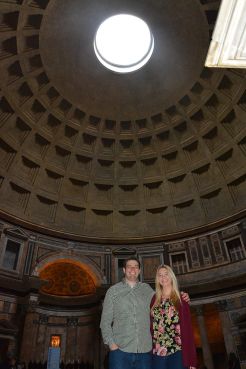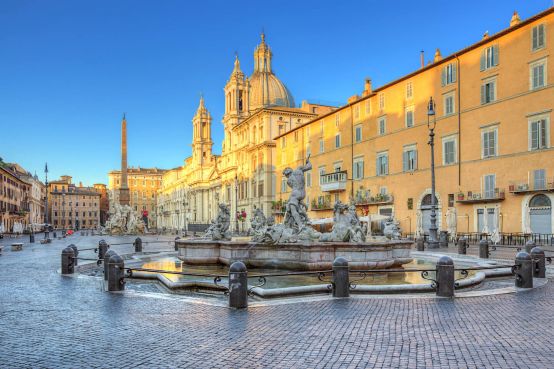The patronage of Popes and Cardinals, supported by enormous financial resources coming from increasingly heavy taxes imposed on the Roman population, left copious examples of the luxury with which the noble families loved to surround themselves.
The imposing Palazzo Doria Pamphilj, seat of one of the most prestigious art collections comprising works by Caravaggio, Raphael, Titian, Velasquez and Bernini, is still owned by the noble family, who live in a wing of the building that is not open to the public. Visiting the splendid rooms, decorated with the precious original furnishings, it will seem as if you have taken a leap back in time.
Another important Roman Palace is also home to a famous art collection. The Palazzo Colonna, owned by the Colonna family who recently celebrated 900th anniversary of the birth of their dynasty. An outstanding member of the family was Marcantonio Colonna, the winner in 1571 of the battle of Lepanto, which put an end to the Turkish rule of the Mediterranean.
This episode is reflected in the frescoes that adorn the walls of the palace. The magnificent art gallery, one of the most beautiful in Rome, was the setting for the famous final scene of the film Roman Holiday, with Audrey Hepburn and Gregory Peck.
Palazzo Barberini, an elegant dwelling was intended to show the position of prestige occupied by the family following the election to the papal throne by Urban VIII in 1623.
The intention was achieved perfectly thanks to an exceptional triad of artists - Bernini, Borromini and Pietro da Cortona - who worked together, leaving one of the liveliest examples the Baroque period. The building consists of an innovative plan, not closed with a courtyard in the centre, according to Renaissance tradition, but open, with parallel wings joined by a central volume.
One of the palaces elements most noteworthy are the staircases: Bernini's on the left, wide and solemn, with a square plan; Borromini's on the right, smaller but picturesque, with a helicoidal shape. Throughout their lives Bernini and Borromini were the bitterest of rivals, and each one was always eager to criticize the other.











